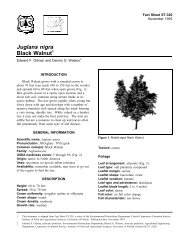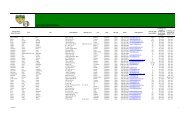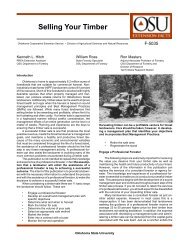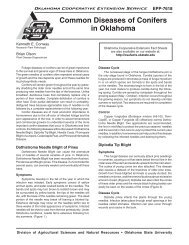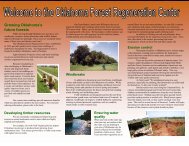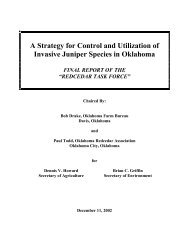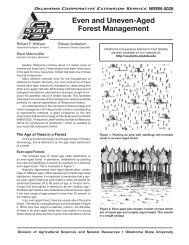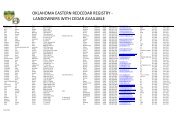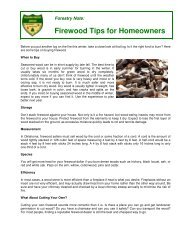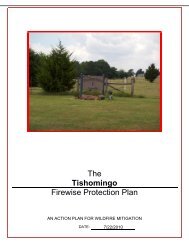Anthracnose and Other Common Leaf Diseases of Deciduous ...
Anthracnose and Other Common Leaf Diseases of Deciduous ...
Anthracnose and Other Common Leaf Diseases of Deciduous ...
Create successful ePaper yourself
Turn your PDF publications into a flip-book with our unique Google optimized e-Paper software.
Figure 3. Symptoms <strong>of</strong> tar spot disease on a maple leaf.<br />
Photo courtesy <strong>of</strong> Clemson University Extension Service.<br />
Figure 4. Symptoms <strong>of</strong> leaf blister on an oak leaf.<br />
Photo courtesy <strong>of</strong> Clemson University Extension Service.<br />
<strong>Leaf</strong> Blister<br />
Elm (Ulmus spp.)—<strong>Leaf</strong> curl is caused by Taphrina ulmi.<br />
Infection by this fungus occurs in early spring <strong>and</strong> results in<br />
small blisters, which eventually cause abnormal leaf development.<br />
Oak (Quercus spp.)—During cool, wet springs almost<br />
all species <strong>of</strong> oaks can become infected by the leaf blister<br />
fungus, Taphrina caerulescens. Circular raised areas occur<br />
on the upper leaf surface, causing matching depressions on<br />
the lower surface. The raised areas are yellowish‐white <strong>and</strong><br />
the depressed areas are yellowish‐brown (Figure 4).<br />
Control<br />
Most leaf diseases <strong>of</strong> yard trees are controlled by gathering<br />
<strong>and</strong> destroying fallen, infected leaves. Where fallen<br />
diseased leaves have not been destroyed, chemical control<br />
is the alternative approach. For suggested fungicides, consult<br />
the current circular E-832, OSU Extension Agents’ H<strong>and</strong>book<br />
<strong>of</strong> Insect, Plant Disease, <strong>and</strong> Weed Control.<br />
During very rainy springs when leaf diseases become<br />
severe, two to three chemical applications, beginning when<br />
the leaves are first unfurling from the buds <strong>and</strong> repeated when<br />
the leaves are half grown, <strong>and</strong> again when the leaves are fully<br />
developed, will usually provide good control.<br />
Trees that have been affected by leaf diseases every<br />
season should also be well fertilized <strong>and</strong> watered to maintain<br />
vigor. Do not fertilize during early fall. Fertilize only after the<br />
trees are dormant.<br />
EPP-7634-3



